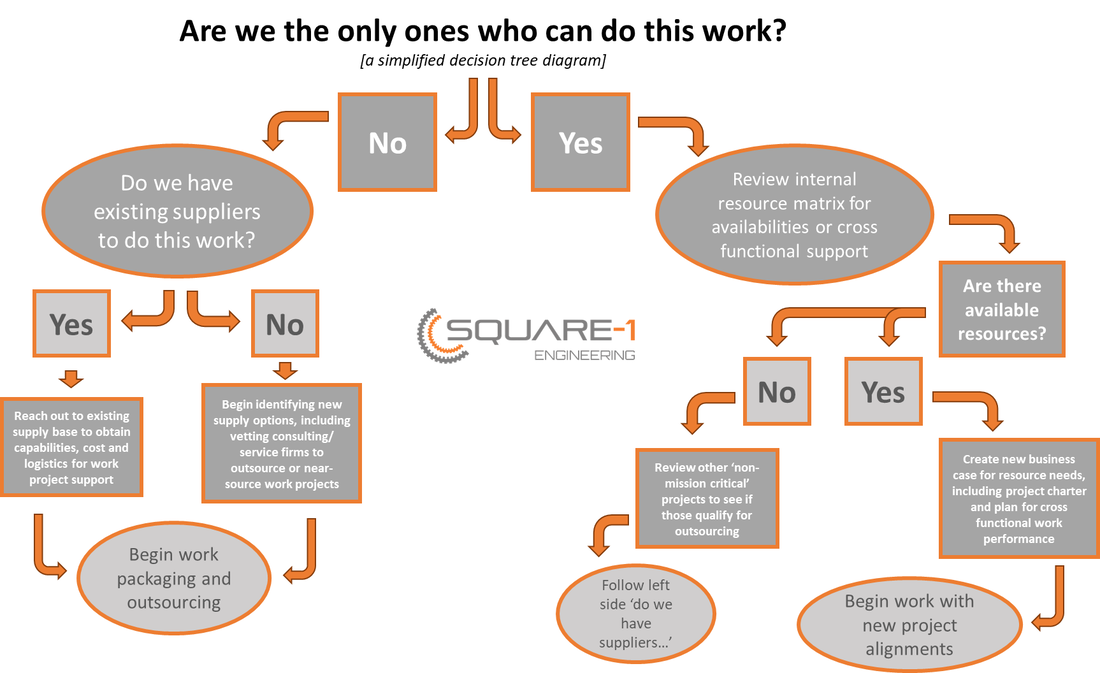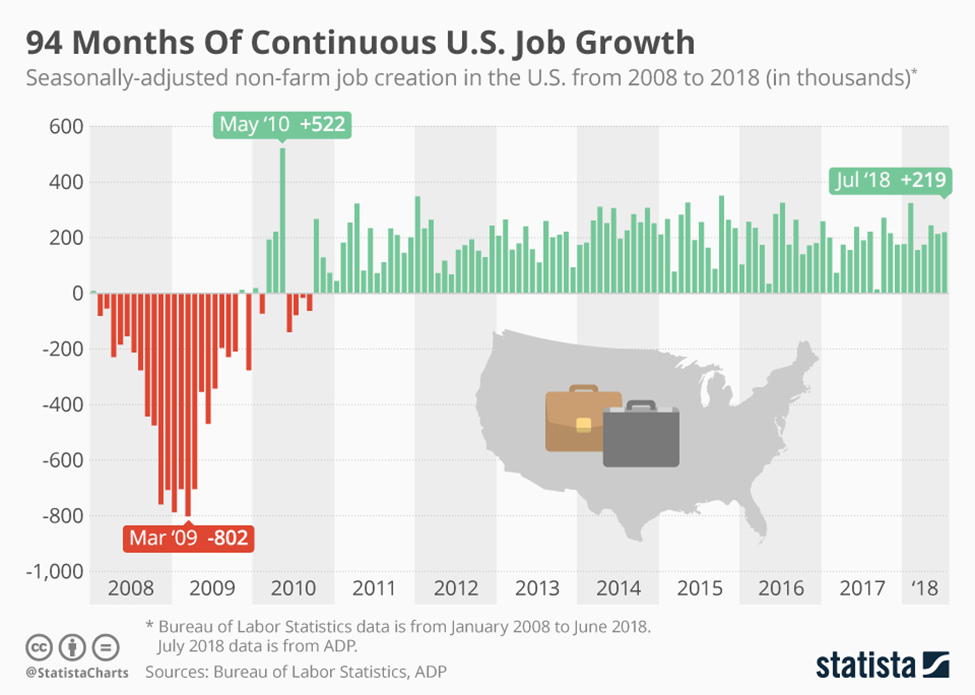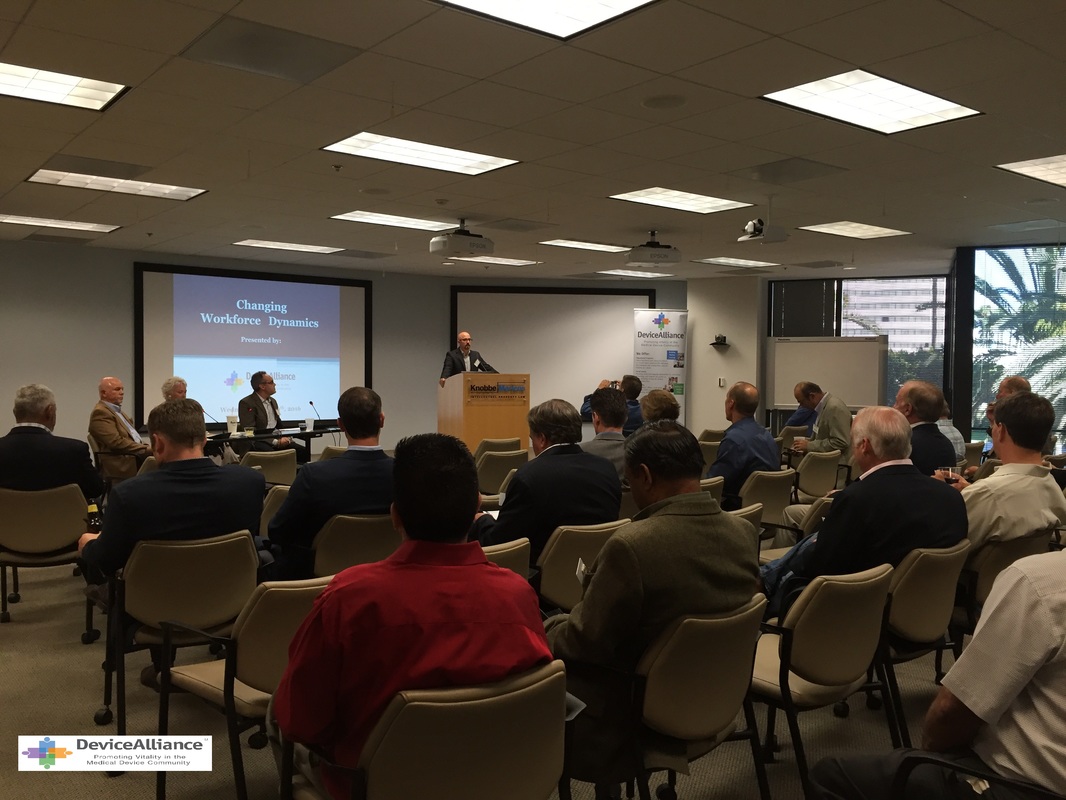|
Leadership is one of the hardest things a person can do professionally. There’s no manual, no playbook, no cliff notes that give leaders the ‘secret sauce’ to successfully lead the charge. Sure there are thousands of avenues one could go to learn more about leadership however at the end of the day it’s still a job that mainly rests on intangible actions like care, empathy, intuition and respect for the very people leaders serve. Leading is often described as a lonely experience. Elisabeth Elliott, a famous author, speaker and missionary once said “Loneliness is a required course for leadership.” The feeling of loneliness at the top is much more common than most of us realize as more than 50% of leaders indicate they have experienced loneliness at one point or another in their career. The stats are even higher for first time leaders at a whopping 70%. When leaders experience solitary the impacts can be devastating. Isolation and loneliness have a direct negative affect on a leaders’ performance which then directly impacts their employees, departments, business units and companies. How is it then leaders find themselves down in the dumps on lonely island? Some of the most common causes are: 1. Forced Isolation- Leaders seclude themselves from the rest of the group by working in an office which can create imaginary barriers between them and their staff. Closing the door actually creates a real barrier that communicates “I’m not available and don’t have time for you”. Regardless if this isolation was intentional or unintentional it produces the same results where the leaders’ staff hesitate to communicate with their boss, or not at all. 2. Decision Making- In most businesses decision making is typically left to the people carrying the torch. When decisions go well all is good in the world yet when decisions produce less then spectacular results the leader is left out in the cold to take the brunt of the responsibility. It’s part of the job but it can also produce isolation at a whole new level which isn’t typically understood or felt by the company’s employees. 3. Don’t Ask For Help- Many times isolation is self-inflicted as leaders don’t ask for help from their teams or peers. There’s an unspoken feeling for many leaders which goes something like, “they expect me to know everything because that’s what I get paid for and why I’m in the job”. Thoughts like this can be incredibly damaging and certainly have no justifiable basis for being correct or healthy. 4. Lack Humility- When leaders act in a way which broadcasts ‘I’m more important than you because I’m in a leadership role’ employees quickly disengage, refraining from putting effort in to build relationships with their leaders or working hard on their behalf. When leaders act this way many times it can be attributed to ego or overcompensating for a lack of confidence. 5. Poor Treatment of Others- One of the quickest ways a leader can find themselves on lonely island is by treating their employees or staff in a poor manner. They lack emotional intelligence. (EQ) When employees feel like they aren’t valued or respected they withdraw which commonly leads to limited interaction and feedback with leadership. The result is a drift occurs in the organization between what leadership wants and what employees are doing. Let’s be clear here, we aren’t about to throw a pity party for our leaders. They’re grown ups right, big boys and big girls who have made the choice to enter leadership on their own accord. So if they’re feeling isolated or lonely than it’s by their own doing, right? Not necessarily. While we’d all love to think the statement above is accurate the reality is that employees do in fact have some ownership in the leadership isolation situation. Employees have a unique ability to see things their leaders don’t, hear things their leaders don’t and help in situations where their leaders would otherwise be clueless about. These five options when implemented help to foster an environment of support and mutual respect, one in which both leader and employee benefits from:
When leaders and employees work together and support one another it significantly reduces the likelihood people of any kind will experience isolation. “There is no respect for others without humility in one's self.” - Henri Frederic Amiel Key Take Away: If you’re feeling lonely as a leader chances are it’s a result of your own doing. Sorry to hit you with the brutal honesty. Loneliness in leadership impacts more people than just yourself. One of the best ways to overcome it is to join a peer group or get a leadership mentor/ coach. Action Item: Feeling like you’re on lonely island right about now? Select two people from your company, one of which needs to be a direct report, and ask them for their candid feedback. Start by telling them how you’re feeling and your desire to do something about it. Get vulnerable and ask for their help while creating an environment where people feel comfortable telling you how they perceive you and your presence as a leader. After you receive the feedback – SHUT UP! Don’t argue about it, don’t disagree. Just listen, observe and take it all in. Thank the person for their feedback and take the rest of the day to smolder on it. With time and patience, you will begin to open yourself up to hearing other people’s perspectives while learning how to take their words and incorporate it into a new you. Now, go get em, champ!
0 Comments
We’ve all experienced it – too much work, not enough time or resources to complete it. Day after day passes, the work doesn’t slow down but your time frames become shorter and shorter furthering the stress of the looming workload. All companies, start up to conglomerate, experience this same situation. They’ve got work they can’t get to given the circumstances of their business. Usually it’s…
We can all agree we’ve seen this first hand and very well may be living it now within our current companies. The key question then becomes, “How do we address the ‘too much work, not enough [blank]’ commonality we all share?” First, we need to assess the work in question and is it mandatory to keep close to the chest? Meaning, are we the only ones who can do the work? If your answer is: NO – “the work can be done by someone else”; we should begin looking for alternative means for getting the work done via our supply base or strategic partners. First, review your existing base of suppliers and their capabilities to see where work can be sent out. Second, identify consulting firms which provide outsource services. Many times the word ‘outsourcing’ is used as an all encompassing description for service providers that offer project or work package support, often which can be done onsite with the client just as easily as offsite – which would be the traditional method of outsourcing. YES – “the work can only be done by our organization”; we should review the matrix of resources versus project loads. Undoubtedly there are resources within the organization that aren’t working at full capacity and or are assigned to projects which aren’t immediate. The trick with this approach is it may not satisfy the situation long term, often times when we try to keep things in house all we do is push off the situation to a later date. If that doesn’t work, test your bias on ‘the work can only be done by us’. If you are in fact going to consider using an outsourcing or consulting firm to support you in your work projects be sure to follow this simple three step process to ensure you’re picking the right partners:
Key Take Away: Sometimes the best business decision we can make is deciding what work we want to do [internally] to increase our capacity and efficiencies while outsourcing work to suppliers or service providers which specialize in project work. In turn, this means we can focus on the mission critical work, that we enjoy and are great at doing while giving someone else the work and or projects we can’t handle or don’t want to deal with. Action Item: Utilize the below decision tree diagram (yes, it’s overly simplified) to help you determine if the work you have in question should stay internally versus would benefit from being handled by an outside source. Are you looking for an outside services firm to help you with your projects? If so, our company Square-1 Engineering, would be happy to speak with you about your needs. Check us out at and let us know how we can help.
You read that right. For the first time in decades there are more jobs available than the actual number of people that are on unemployment. As of July 2018 there are 6.3 million people in the US on unemployed, the equivalent of 3.9%. Axios, an online media company, shared yesterday we’ve officially crossed the barrier of more jobs available than people suitable or ready to fill them. Our economy also continues to boom as we’re in the longest job growth period on record, now 94 straight months. How can this be? If the economy is doing so well and there are so many jobs available why is it we still have so many people unemployed and why aren’t those which are unemployed taking the available jobs? ANSWER: The American workforce is changing, changing in TWO BIG WAYS: 1. Sedentary Lifestyle: we’ve become a society of professional sitters. The average person now sits, yes – sits on their keister, upwards of 51 hours and 44 minutes a week. It’s such a dramatic change in our society and workforce that some are now calling ‘sitting’ the new cigarettes. We’ll leave the health aspect of sitting to another article. For younger generations this lifestyle is their only perspective on working and it’s beginning to have a significant impact on our economy as it’s changing the jobs they’re taking, or willing to consider. Jobs which are considered physically or mentally demanding aren’t at the top of the pecking order and those industries are having an incredibly difficult time getting new blood to join the ranks. (construction; farming; trucking; skilled trades like plumbers, electricians, mechanics; emergency services; law enforcement, etc.) The change to a seated society tells us something else. As a society we are moving away from a ‘do-it-yourself hands on’ society where we’re focused on production to a society of ‘creative typists’. The new skilled trade is programming, not plumbing. Today’s emerging workforce wants to be close to technology and feel good movements while being free of work which may be construed as physically or mentally taxing. Getting your hands dirty on the job is out, sitting inside with the AC and nap-pods is in! 2. The Skill-less Unemployable: No one likes to think that there are people out there which don’t have skills or aren’t employable, it’s un-American. Yet it is becoming an increasingly frightening reality. The second reason our workforce is changing is there are a growing number of unemployed workers that are finding themselves unable to take advantage of the volume of job opportunities on the market due to their skills or abilities becoming out dated. Out of date just like the baloney sandwich my mom used to make for my lunch in grade school. No one eats baloney sandwiches anymore, so if you didn’t adjust your skills with the growing times, moving to turkey or tofu, you got left behind. And left behind without even realizing it, holding a moldy, crappy sandwich (your skills) in the process. Those who are unemployed at present are largely in part just not employable. Of course, there is always the exception to this rule however the growing majority of people who are unemployed just don’t have current day marketable skills to function in an environment which increasingly demands technology proficiencies. With national unemployment rates under 4% it tells us that those who can work are working and those who can’t – well they’ll continue to experience hardships trying to find jobs in a marketplace that is increasingly unforgiving and more expecting of people’s capabilities. As a result, the gap continues to widen whereas those who have been unemployed for some time trying to find work will continue to experience much of the same. The stigma attached to unemployment, the longer you’ve been out of work the more likely it is you will remain out of work, is a harsh reality for those unemployed. With so much opportunity to be had in the marketplace people who are unemployed for longer than a month or so find themselves having to develop colorful explanations as to why they weren’t working to hopefully appease prospective employers. How to Pick the Right Supplier1/12/2018 The supplier selection process is an important and vital step for any size company. Making the wrong decision leads to countless hours of wasted time and of course money down the drain. A successful supplier selection process is even more important for small and start-up based business where financial considerations are at the top of the pecking order. When looking for a new supplier follow these steps to best position yourself and company for success: 1.Know What You Need Before You Need It Two reasons this is important: 1st – if you don’t know what you need how will you be able to explain it to a supplier? When we know what we need and therefore want we're better prepared to explain those needs while setting expectations for what a successful partnership and outcome looks like. This minimizes miscommunication and opportunity for expectations falling through. 2nd - Waiting till the last minute to find suppliers often leads to decisions being made which may get you out of a momentary jam but leads to larger problems down the road. For this reason it’s vital you are proactive in establishing relationships with vendors and suppliers. 2.Establish Minimum Expectations for Vetting Suppliers Establishing minimum expectations means that you will vet all potential suppliers with the same list of needs, criteria and expectations. This will help to create an even playing field when vetting suppliers and their capabilities. Similar to #1, when you know what you want and have created a way to gather information which allows you to do equal comparisons your chance of making the right decision increases dramatically. If need to create a checklist to hold yourself accountable to making the right decisions then by all means do so. 3.Be Strategic Once you know what you need from a supplier it is important to think about other associated or cross functional activities which need to be done that could be accomplished by a single supplier. The ideal situation is you find a supplier that can do more than just one component of your needs, therefore providing more value in the long run. This also saves time because you have less suppliers and vendors to managed increasing your efficiency and effectiveness. 4.Supplier Identification Referrals, referrals, referrals. Once you know what you need the best approach to finding the right supplier is by reaching out to others in your industry, or industry associations, to learn who they use, and just as important who they don’t use. Take the time to read reviews, gather intel from people you trust before you start calling potential suppliers. While sites like Thomas.net and Google can provide this information it is likely you will quickly find yourself overwhelmed with information. In the end the most useful data is those that are unbiased or comes from experience which is best collected from trusted resources. 5.Outreach and Selection When speaking for the first time with a potential new supplier try to connect with the people you will actually be working with, not just the company’s sales person. This is important because once the relationship is established the majority of your time won’t be spent with their sales people rather those delivering the service or product. What is their communication like? Do they respond quickly and address mistakes immediately? What is their customer retention rate? Find out how long their employees have been with the company too. If the company suffers from consistent turnover that should be a big red flag as you will likely have to be much more involved with this supplier helping coach and direct new employees to ensure the work is done properly. You don't want to be in a situation where you're training your suppliers new employees just so they can turn around and bill you for it. Also, where are you in the pecking order of the level of importance to the supplier? Don’t be fooled, not all clients are treated equal, even if they tell you otherwise. When you know where you stand it is easier to build a relationship based on realistic expectations. In the end, supplier selection should come down to three things, in ranked order:
At the end of the day it doesn’t matter how affordable or cost effective a supplier is, or how nice they are as people. If they can’t perform, and do so consistently, the other two don’t matter. I’ve also found that paying a bit more for the right service and relationship often times is worth the investment it in the long run. Quit Your Job Without Creating Enemies12/5/2016 My father once shared some sage advice with me: “never burn a bridge”. I’ve been consistently amazed at how small a world it can be as I often times run into former colleagues, clients and friends who I shared a past relationship with to varying degrees from a past life. When I bump into these past connections its uncanny how often I find out the person I knew prior now has a direct ability to impact my current life, professional and personal. This is the prime reason I firmly believe one should never burn a ‘relationship’ bridge. What about when we have to quit our job? January and February represent the highest attrition months of the year, meaning the largest percentage of resignations and terminations occur within these two months. Why does this happen? Companies and employees alike are looking at the New Year and wanting to start fresh which typically means getting rid of employees that aren’t cutting the muster or employees themselves who leave jobs that have lost their luster. When we’re the one to make the decision to quit our job it can be fun to think about the moment you deliver the news, after which you imagine yourself singing and dancing through the office like you’ve just won the lottery while your colleagues look at you like you’ve lost your damn mind. We experience our very own Jerry Maguire moment and we’re all too thrilled to ask everyone around us “who’s coming with me”. In these moments are we thinking about how our actions will impact our future? Some of us do, however there is a rising majority of people that seem to forget that the way we handle our resignation may or may not pay dividends in the future. If you plan to quit your job in the near term use these steps to deliver the news to your employer while leaving gracefully. Step 1: Quit before things get bad Often times we wait too long to quit a job that we know isn’t right for us. If you wait too long you risk your reputation suffering as often times our productivity begins to lessen as we aren’t as passionate about the job as we once were. Step 2: Don’t tell anyone It’s a big mistake telling colleagues you’re quitting before you’ve actually delivered the goods. The last thing you need is your boss to find out you’re quitting before you’ve actually confronted them with the news. Step 3: Be professional but save the novella It’s a good idea to inform your employer about why you’re leaving and perhaps even some small detail on where you’ll be going. Anything after that and you’re just wasting time and energy. This is not the time to spill the beans on all of the crap you hated about your job, the company or your boss, creating a drama tornado in the process. If you work for any sizable company HR will typically ask for this information however it does nothing to serve you for the future, it only serves their interests and that isn’t your problem anymore. The time to give feedback was when you were fully employed, not when you’re exiting. Step 4: Make it official Your resignation should be given to your direct boss and no one else. Be sure to provide him or her with a formal, typed out resignation. Google ‘resignation templates’ and you’ll have all the options to your hearts’ content. Step 5: Respect & professionalism at all times What’s most important to remember while you’re going through the resignation process is your professionalism will be noted by almost everyone involved. If you plan to continue working in the same industry or similar industry you’re current job is in more than likely you’ll run across your company’s employees in the future. For this reason and many others it’s important to be respectful to whoever is involved, which also means providing at least a two week notice to your employer. Also, you should never gossiping or talk ill about your boss or company after you’ve left. All that does is make you look bad in the process, which includes going online to rant about how thrilled you are to not work there any longer. Step 6: Keep it classy I once had an employee of mine who had quit send me a letter several weeks after the fact thanking me for the time she spent on my team while also sharing what she learned. I was really impressed by this because it signaled that while the job wasn’t for her any longer she did appreciate the opportunity while she was here. In the end, we all will be judged by our actions so it’s best to remember these sage words… “Never burn a bridge!” As generations continue to evolve in our country so do the thoughts and feelings of people in present day. One thing that has been consistent through the years is the questioning of authority across all sectors: government, public and private. Those who are in a position of authority certainly have a tough job ahead of them as they are constantly under fire by the very people they claim to serve, whether its justified or not. Which leads me to an important question: Does questioning authority help or hurt us? Let’s examine some current situations in our country: Wells Fargo Scandal Wells certainly isn’t the first bank to ever have dealt with a large scandal. Most of us recall the recent recession where banks by the hundreds got rich off of consumers thanks to unscrupulous business practices. Nothing new here. What is new with the Wells Fargo scandal is that it went on for a period of five years with almost zero questioning by internal management. Customers were certainly questioning Wells aggressive sales tactics however I’ve not been able to find one single instance of an internal person in management which stood up and said, “this isn’t right”. Two comments are appropriate here: 1) it’s highly possible this did happen it just hasn’t been publicly released; 2) when you’re an internal employee it can be incredibly scary to blow the whistle on your own employer, especially when your employer is the largest banking institution in the world. In this case, the lack of questioning authority proved to be harmful as thousands of customers were negatively impacted, jobs lost and countless tax payer dollars will be spent and wasted dragging this banking giant through the legal system. CDC & DTaP Vaccine In June of 2016 the CDC (Center for Disease Control) announced in a 13 page report that one of the nationally required vaccines, DTaP - which all children are required to take to enter school, has now been linked to cause autism. In 2016 it is expected that 1 in 68 children will develop autism in comparison to 1 in 150 in the year 2000. Autism is a major issue within our country with its occurrence rate doubling over the last 15 years. While this information is still very new to the general public it was eventually brought to the surface thanks to hundreds, if not thousands, of parents who stood up and demanded transparency from our government. In this case, questioning authority has proven to be helpful as the general public will now have more transparent information in which to make decisions by. Societal Altercations with Law Enforcement It’s a tough time in our country to be in law enforcement. It’s equally tough for many of our fellow Americans who feel their rights have been stricken from them as a result of discrimination. Regardless of which side of the fence you’re on its one of the most sensitive topics in our country today. As shootings during police altercations continue it’s increasingly difficult to discern what is justified versus what is crossing the line, infringing on the rights of the common person. When we question authority in these moments it is vital that we do so with a quest for transparency and truth. This is why I believe Martin Luther King Jr. was so successful as he believed violence was not the answer toward successful activism and change. As a result he was able to lead our country through some of the largest equality reforms in our nations history. In this instance questioning authority is appropriate however the way we go about it can either support or diminish our cause which is why it’s important to think before we act. Kaepernick Takes A Knee Colin Kaepernick, NFL Pro Quarterback for the San Francisco 49ers, started a movement which makes a statement about the inequalities within our country, addressing the law enforcement altercations mentioned above. While he certainly has the right to a peaceful protest are his actions impacting change or causing further issues? Furthermore is the forum in which he’s doing it, employed by private organization (which the NFL is), appropriate? While I may not agree with all the things that go on in our country I still respect the flag and our national anthem as they symbolize the freedoms which were brought about by men and women who gave their lives so we could enjoy a life of choice in this country. There are plenty of other countries in this world who have much harsher living conditions, sometimes I think we forget how good we have it here even with our current day challenges. Are there equality reforms which need to be made, certainly, but we can’t lose sight of what’s important just to make a point. In this situation I believe Kaepernick’s questioning of authority and the way he is going about it is actually counterproductive to what his original cause is. I’m a believer that questioning authority or the status quo for that matter is always a necessity however perhaps the real question isn’t ‘Does questioning authority help or hurt us?’ Perhaps the better question is ‘What is the best way to go about questioning authority to drive actual change?’ Please feel free to share your thoughts and remember to be respectful of other people’s views – it’s what ultimately makes this country great. Last week a friend and I had an interesting conversation over dinner having to do with hiring new grads from college. The two of us agreed that we have seen a rise over recent years with the number of people coming out of college ill-prepared for the working world. But why? We discussed the disparity that exists with some new grads and their ability to actually put their years of scholastic achievement to work in the real world. Regardless of their GPA many of them struggle and it has employers concerned, especially in the engineering world. This is where our conversation hit a crucial point and where the rubber meets the road for our recent college graduates: theory versus application. In academia theory is served up on a silver platter. Students learn by lecture, book and lab. They learn the ideal setting and framework of hundreds of concepts. What they learn is ‘HOW’ something works, where it comes from and should you need to replicate it follow these guidelines, etc. Kind of like a recipe for baking a cake. Follow these instructions and the result will be a nice red velvet cake. My favorite! Unfortunately what we get a lot of times after the supposed recipe has been followed by new grads is not red velvet cake at all. It’s a pile of crap that doesn’t remotely resemble a cake nor is it edible. Simply being able to follow a recipe, or recite a definition for that matter, does not mean you truly understand the concept which can be a really rude awakening for a newly hired recent graduate in the working world. Our recent engineering grads may be able to tell us the definition of Ohms Law, reciting it verbatim however they struggle to actually use that same theory in practice in the working world when it actually counts. What academia fails to accomplish is teaching and engraining in its students heads the ‘WHY’ part of the recipe, not just the ‘How’. Learning the ‘WHY’ behind a concept provides us with a larger frame of understanding rather than just surface level information. This articulates the important difference between information and knowledge. (information = theory whereas knowledge = application) When we know why something exists we can better apply said concept to real world settings and or make suitable adjustments when things go array. The ‘WHY’ piece also addresses creativity. When we’re confronted with an issue or challenge in the working world there’s no professor or recipe to help keep us on track. No directions that say ‘substitute this for that if this happens’. One has to be able to draw on their creative juices AND theory to come up with possible solutions. Why do recent grads struggle with applying their education in the workplace? My humble opinion falls on two primary contributors:
Don’t worry employers. Fret not new grads, we can fix this challenge so that everyone comes out on top. How can we change this to help our new grads?
Assumption is the KILLER of opportunity. When we assume we make stories up in our heads about what our experience or expectations should be. In business the act of assumption can lead to major loss of opportunity simply because many of us aren’t aware we’re making the mistake in the first place. Many of us do this, including me! Last week I had the opportunity to attend an interesting workshop put on by Mark Leblanc, small business guru, author and keynote speaker. Marc’s approach to success in the small business world was straight forward – take things one step at a time and measure your success constantly. Throughout the morning Mark covered a variety of topics ranging from the 9 best small business practices to high value activities. As the morning came to a close I caught myself laughing as I had recently committed one of the simplest mistakes people can make in business. I didn’t just do one of them, I did both on Mark’s list which he refers to as the ‘Two Deadly Business Sins’. Are you an assumption sinner? Business Deadly Sin #1: If my customer wrote me a check once they’ll call me if they need me again Business Deadly Sin #2: If my customer wrote me a check once they automatically know all that we can do for them (note: the word ‘customer’ is meant to reference an actual external customer however it can also be considered an internal colleague, cross functional team or business unit if you do not interact with external customers) The first of our two delightful sins points at the assumption that if we’ve done business with a customer once they will “of course call us back the next time they need help”. This couldn’t be farther from the truth yet so many of us in sales, services, entrepreneurship, small business, you name it, fall victim to this fallacy. Mark further shared with us that it’s not uncommon for our customers to think “Matt hasn’t called me in a couple months, he must not want to do business with us any further.” The assumption on Matt’s end that the customer will just call him when they’re ready furthers the issue as Matt doesn’t follow up leading the customer to believe he’s no longer interested in their business. For Pete’s sake! That couldn’t be farther from the truth it’s just Matt doesn’t know it yet. The second deadly sin addresses the assumption that if you’ve done business with a client once they should then automatically know every aspect of your business, where you can help them and where you can’t. If you’ve ever had a customer say “Gosh Jillian, I didn’t even know you offered that type of service. We would have loved to work with you but we just signed up your competitor because we weren’t aware you could help us in that area.” It’s like getting slapped in the face with a wet leather belt which leaves a welt for weeks. Your customer, who self admittedly loves working with you, went to your competitor for help simply because they didn’t know you could help them. Ouch. (and yes, I’ve actually done this more than once) So how do we remedy this? Let’s start by focusing on never assuming about the relationships you may or may not have with your customers or what they know about your product or service. It’s always better to pick up the phone and call rather than wait for the phone to ring on your end. Take the initiative! When speaking with your customer ask questions about how their business is doing and which areas they need help in the most to best determine how your product or service can be a value add to their pain points. Remind them often about what you do and how you do it. Be consistent! It’s amazing at how many things are sold to professionals which claim to be the next best thing in advancing your career. From books and seminars to workshops and online tutorials, there seems to be an endless supply of crap that many of us buy to help our careers yet few ever see any real return on investment. There is one thing that doesn’t rely on fancy sales pitches or overdone workbooks and it can truly elevate your professional game. Best part is we all have access to it and most often it is completely free of charge. Welcome to MENTORSHIP. No matter where you are in your career having a mentor is highly advisable as it can be the difference between you navigating the waters of a successful career versus drowning in the murky depths of the rat race. Mentors aren’t just strategic career advisors they’re the angel over your shoulder whispering sweet nothings into your ear. So if having a mentor was so impactful how come more people don’t have them? Typically it’s because we’re scared to ask for help. It’s possible we don’t think we need the help, though many would object. It could also be because we don’t know where to look to find such a connection. At the start of this year I decided it was high time to get me a new mentor. I’ve been lucky in my life to have a consistent and very good mentor in my father which I’m incredibly thankful and fortunate to have. I was looking for an additional mentor that had specific experience – growing a business from the ground up and doing so with a technical customer base. After doing some snooping around I landed on the website of Micro Mentor. It’s like a dating site for professionals looking for a mentor, but no hanky panky is involved. You fill out a profile and then your needs and interests are matched with a possible mentor. Both parties get to review one another’s profiles after which they have an initial conversation to see if the match is a good fit. This is where I met Bonnie. Fast forward Bonnie and I have now been working together for eight months and I’m continually impressed and appreciative of the guidance and thought provoking perspective she brings to the table. Bonnie started a technology service business in San Francisco a couple decades ago by investing a couple thousand dollars to start the company. From that start she grew the business to over 100 employees and has recently retired, earlier nonetheless, as a result of the success she experience along the way. Needless to say I feel like I can accomplish a lot knowing I have Bonnie in my corner. (let’s also not forget my father) Why am I sharing this with you? If you don’t have a mentor you need to get one! The relationship, when done right, will positively change every aspect of your career and outlook on business. I’m so passionate about mentoring that I too am a mentor – it’s worth every minute of my day. Here’s what mentors, like Bonnie and my father, bring to the table and why they’re so incredibly valuable to you and I: > Business Savvy – they bring experience and knowledge to the table that just can’t be matched by a text book or online workshop. You can’t replace real experience. Learning from a mentor isn’t just about accomplishing big feats it’s also about learning from their mistakes. Yes they’ve made plenty of them just like you and I. > External Perspective – often times when we need advice we go to people who are close to us, most commonly that work for the same company. While that isn’t necessarily a bad thing what is important to remember is that these people have a certain level of bias in their thoughts and advice. Having a mentor outside your company gives you the chance to get advice which focuses on the situation at hand rather than personal bias or internal company politics. Mentors can also share with you how they have dealt with situations perhaps in other lines of business or industries which could provide you with a fresh approach to handling a situation. When your mentor is outside your company you can also rest easier knowing you can share your true feelings and thoughts and know that information won’t get back to your boss or be passed along at the water cooler. > Confidant – Mentor are great listeners. Like my mentor Bonnie, she’ll sit on the phone with me and graciously give me ample time to spill my guts at which point she does an excellent job summarizing the situation and delivering exceptional feedback. I trust that I can be open with her which ultimately helps my development process. > Accountability – Mentors vary greatly in this area and how they approach it. If you are going to ask for a mentor make sure you are willing to actually implement the ideas and suggestions the two of you collectively come up with. There’s no better way to ruin a good mentor relationship than to talk the talk but not walk the walk. If you are one of those people that sometimes needs a swift kick in the ass to get going mentors can also be utilized for that, just be careful how much ass kicking you need. Mentors ultimately aren’t baby sitters and they’re not supposed to run your business or career for you. > Comfort Zone Executioners – let’s face it, we all love dancing in the comfort zone for longer than we should. Mentors are great at breaking up common thoughts or practices to get you out of your area of complacency. When this happens true growth is right around the corner. Last week I had the honor of moderating a speaking engagement put on by Device Alliance in Irvine, CA. If you aren’t familiar with Device Alliance (DA) it’s a Medical Device industry association whose primary focus is providing a supportive platform for the continued knowledge development and relationship building within the medical device industry in SoCal. The purpose of the event on July 20th was simple – to have an informative discussion on ‘Changing Workforce Dynamics’ surrounding these three topics:
As we got into the meat of the content for the evening I started to pick up on a topic that seemed like it was trending in a fair amount of our conversation.
Is the Medical Device industry attracting younger generations at the rate it should? There seemed to be a fair amount of dialogue and a bit of concern from some people present at the event addressing a discrepancy within the industry as it seemed that new grads weren’t flocking to medical devices like they once had. I can’t substantiate this claim to say ‘yes’ it’s happening, or ‘no’ it isn’t, however it’s a powerful topic to discuss because it’s a potential challenge we face in the near term if in fact it is true. So let’s hypothesize for a moment: If new talent, in particular younger generations, are not entering the medical device industry like they used too, what are the potential cause and effects we’re faced with? CAUSES:
EFFECT:
Is the Medical Device industry attracting younger generations? What are you thoughts? Agree or disagree? About the AuthorTravis Smith is the founder and managing director of Square-1 Engineering, a medical device consulting firm, providing end to end engineering and compliance services. He successfully served the life sciences marketplace in SoCal for over 15 years and has been recognized as a ‘40 Under 40’ honoree by the Greater Irvine Chamber of Commerce as a top leader in Orange County, CA. Categories
All
Archives
April 2024
|
Visit Square-1's
|
|















 RSS Feed
RSS Feed


